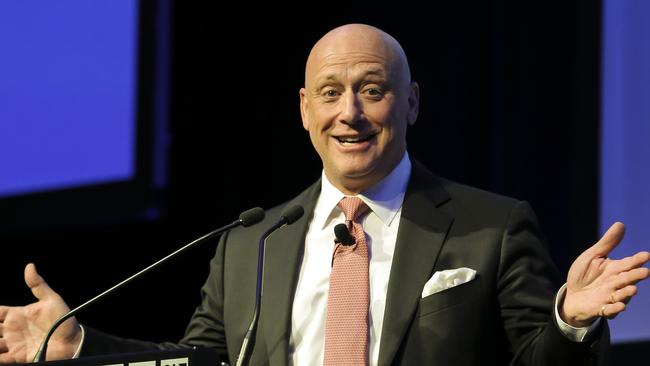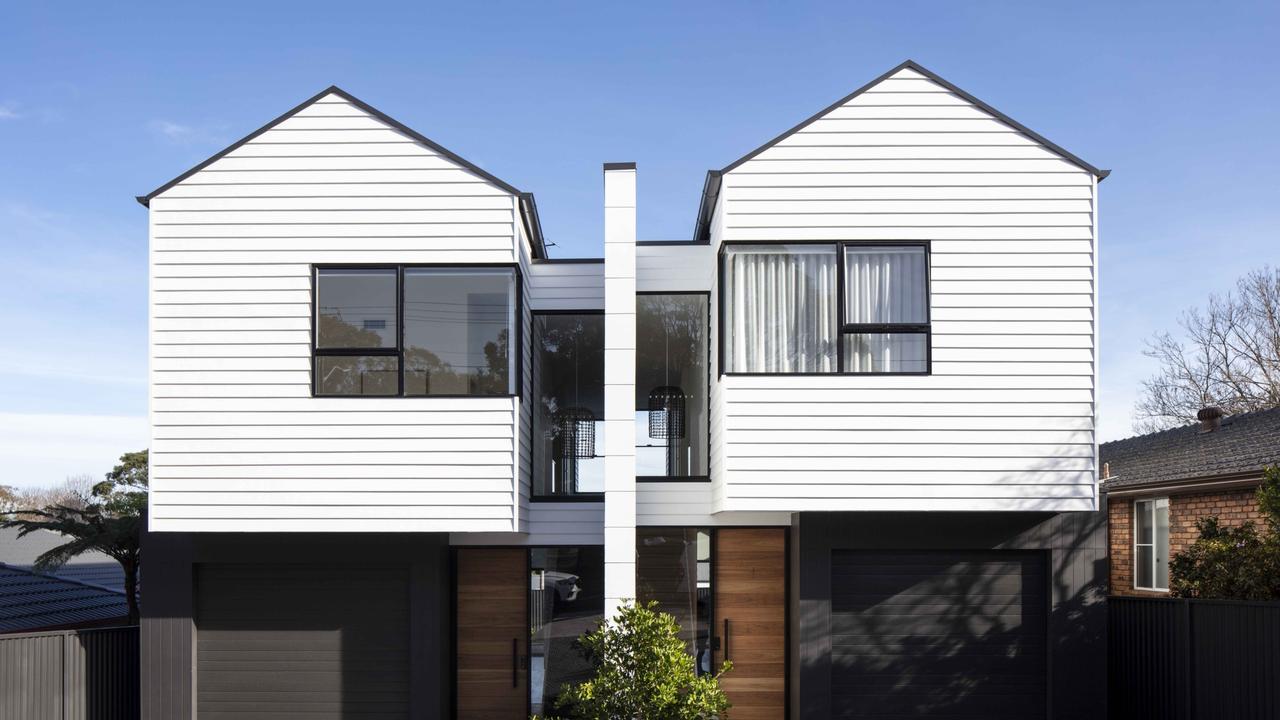AGL says former CEO Andy Vesey’s departure not a Liddell matter
AGL Energy says the abrupt departure of former boss Andy Vesey was unrelated to its bitter coal-fired feud with Canberra.

AGL Energy says the abrupt departure of former boss Andy Vesey was unrelated to the power giant’s bitter feud with Canberra over the future of its Liddell Power Station and was part of normal succession planning as the company looked to a new phase of growth after a period of energy sector volatility.
Chairman Graeme Hunt also defended the board’s decision to look for a replacement for Mr Vesey after three and a half years in the top role as a natural board process and inline with the average tenure of a chief executive in Australia.
“I can tell you that it is not about the relationship with the government and that a succession process had been underway for some significant amount of time,” Mr Hunt said after the company’s annual general meeting in Melbourne today.
“The shareholders who I’ve spoken to and I’ve spoken to a lot over the last few weeks and months all understand and are comfortable with the change.”
Mr Vesey oversaw a 50 per cent increase in the profits and share price of the company (AGL) from February 2015 when he was appointed and set a path to make the company a cleaner, greener electricity generator and retailer. But he clashed repeatedly with the federal government over his refusal to sell or extend the life of Liddell beyond its planned 2022 closure — a policy stance which AGL confirmed today it will stick with.
The ousting of Mr Vesey in the same week as former Prime Minister Malcolm Turnbull was not connected, according to Mr Hunt.
It was incorrect “to suggest that there is any relationship whatsoever” between the events, Mr Hunt said. “Things unfolded in two parallel paths”. They were “not related and they just came to fruition at the same time.”
The board was focused for several months before Mr Vesey’s departure on identifying new internal and external talent as the Sydney-based company entered a new phase.
“The company is entering a new stage given the continued pace of change in our sector. The optionality that we have to continue to create value for shareholders is such that we’re moving onto a new phase that will require new leadership,” Mr Hunt said today. “We’re going through a process to work out who that is going to be.”
Considering a new leader was part of a board’s normal succession planning remit.
“It’s a natural process to ramp that kind of investigation and consideration up particularly as a CEO goes into their fourth year,” Mr Hunt said. “The average tenure of a CEO in Australia is about that.”
A new chief will be announced before Christmas with interim boss Brett Redman considered the leading internal candidate.
Mr Vesey, who remains an adviser to AGL until December 31, may be called on by the board to help assist with the transition to a new CEO in the next few months, Mr Hunt added.
The electricity behemoth also reiterated it will proceed with the planned 2022 closure of Liddell and has no plans to back away from the decision.
“Our strategy to exit heavy carbon emitting facilities over the long-term is unchanged,” Mr Redman told reporters. “We will continue in an operational sense to review our plans but there is no change at this point to the Liddell exit date.”
AGL said earlier the politically sensitive call to close Liddell was not driven by ideology but was an operational decision to help manage the company’s risk and move to a “sustainable and responsible transition” to a new cleaner power mix.
“It is not a question of ideology on our part. Far from it,” Mr Redman told the AGM. “And neither is the need to address our carbon exposure more generally. It is a question of prudent and pragmatic risk management.”
The company also conceded widespread concern about high power prices which it said had jumped “significantly and probably unsustainably” in recent years.
It puts the blame for the price hike on higher prices for coal and gas, the closure of coal-fired power stations like Hazelwood, a spike in network costs and continued uncertainty over government policies following the dumped national energy guarantee.
AGL is working with new energy minister Angus Taylor to address affordability and stimulate further investment in new generation while restoring the confidence of the electricity industry among Australian consumers.
Mr Taylor warned last month the government is prepared to “wield a big stick” to reduce high power prices in a speech where he accused the energy giants of acting like the Big Four banks in breaching the trust of Australian consumers.
AGL is now waiting for policy details from Mr Taylor and expects to work in tandem with the minister to lower prices and restore confidence in the sector.
“The energy minister is signalling that he is looking to come to us with detailed policy that he’s looking to implement,” Mr Redman said. “We’re standing here saying we’re ready to engage and work with him to try and make that work — the detail of that is a matter for the energy minister and we are waiting to see what he puts forward for us.”
AGL confirmed an earnings forecast for the 2019 financial year of $970 million to $1.07 billion which had previously been given at its results in August.




To join the conversation, please log in. Don't have an account? Register
Join the conversation, you are commenting as Logout